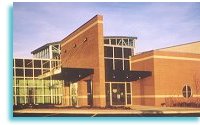

|
|
Here are some important reasons to choose HFC for your fitness center planning: Independent, objective opinions. HFC does not develop or manage fitness centers. We have no personal interests to consider when projecting market demand, and no pro-development bias. Every other firm with significant experience in this field is affiliated with or was founded by someone currently active in center development or management. Successful experience. HFC has performed feasibility studies on almost 200 markets, and our clients have developed 43 centers valued at over $500 million. Total membership exceeds 160,000. By number of centers and members, and rate of development, no other firm in the industry can match this success. All centers following HFC plans produce significant financial returns, many in excess of 15% annually. Industry perspective. The founders of HFC also founded the Medical Fitness Association, the industry's only trade organization. HFC has a broad perspective on industry history and potential, and how these centers serve their communities. This knowledge is reflected in our work, and many clients feel this approach is critical to board approval of the project. Specialized data sources. HFC relies on MFA data specific to hospital centers – membership, pricing, space needs, development costs, clinical programming, staffing levels and compensation, revenues, expenses, and financial returns. Other consultants rely mainly on data from IHRSA, the trade group for commercial clubs. We believe that misses much of the older, sedentary market that hospital centers attract. Optimal facility. HFC uses a proprietary modeling system to allocate building space requirements for membership and clinical programs. Reflecting data from 300 existing medical fitness centers, the model recommends a unique size and preliminary design. Our clients have built centers from 5,000 to 101,000 square feet, and no two are alike. Flexible center design. Some HFC client centers are grand, but many are much more efficient, requiring fewer square feet and lower cost per member. We work closely with architects very experienced in following either approach. Financially realistic. HFC's financial pro formas use reliable inputs - no assumption that a short lease will be available when full amortization is required; no assumption that strong real estate appreciation will cover weak operating results. Flexible planning tools. HFC studies are unique in projecting a price/membership matrix, allowing the client to weigh the trade-offs between dues level, membership size, and building cost. Other feasibility consultants forecast a single price, membership, and building size. Consumer clusters. Our feasibility study adds consumer cluster analysis to the more common demographic calculations. This describes the personality and buying characteristics of the local market, highlighting which groups will join the center, and how to program and market accordingly. Consumer research. HFC can perform a telephone survey to verify or adjust the initial feasibility findings. A questionnaire refined over several years asks local residents specific questions regarding facility location, features, programs and prices. Johnson & Johnson preferred vendor. Johnson & Johnson Health Care Systems, the world leader in wellness products and services, chose HFC as its preferred vendor for fitness feasibility for five years. Having said all that, we invite you to hear from those who have had the experience. Read What Our Clients Say
|





